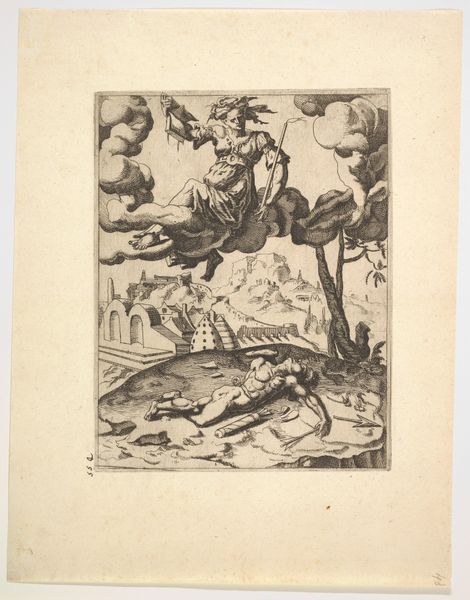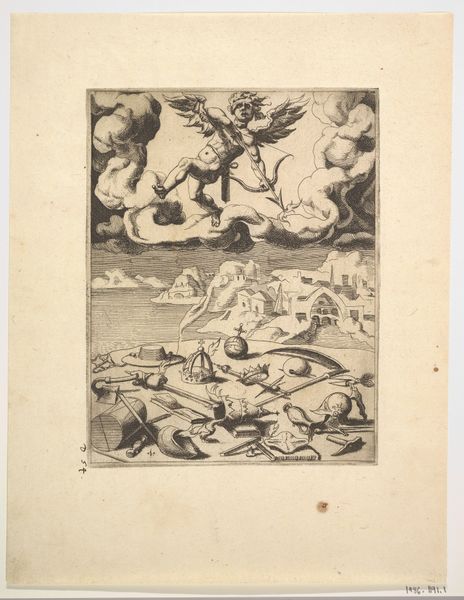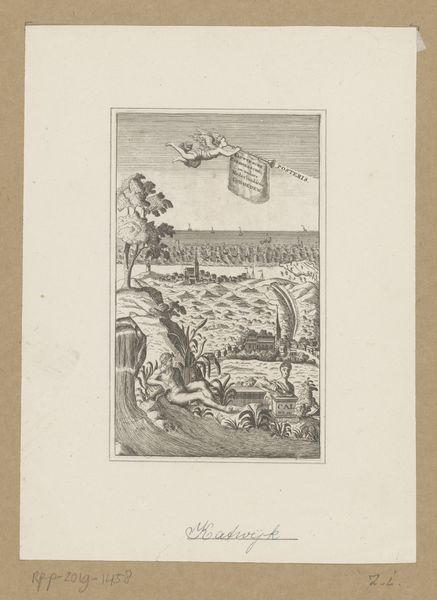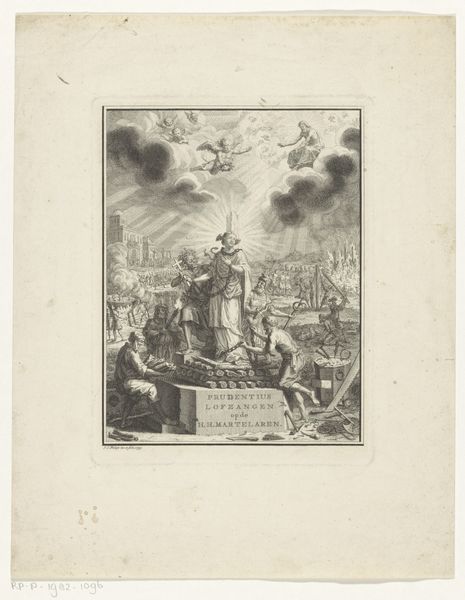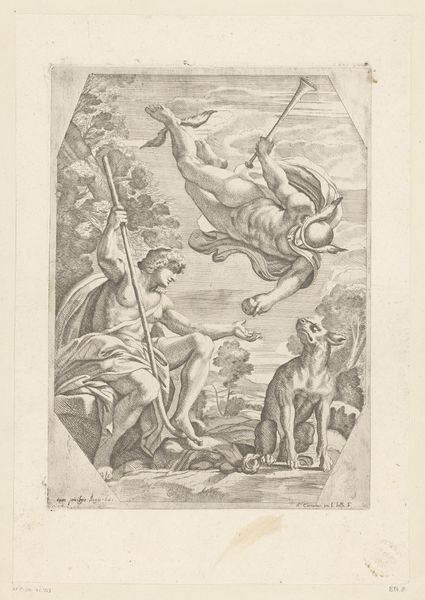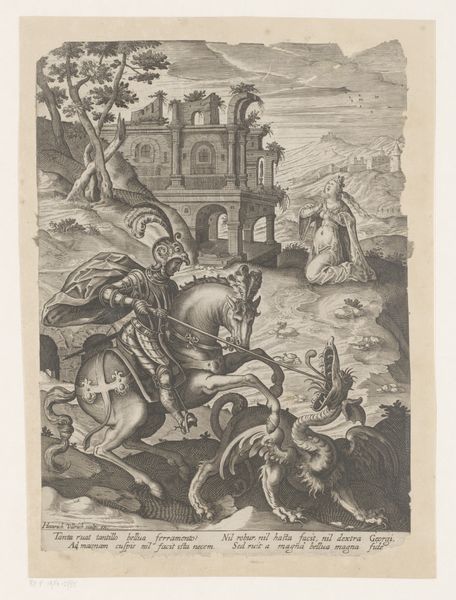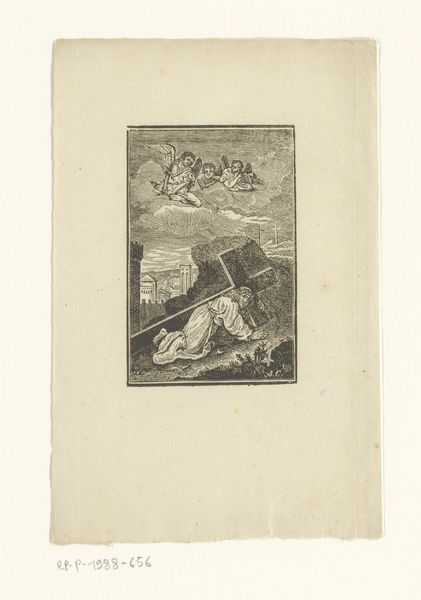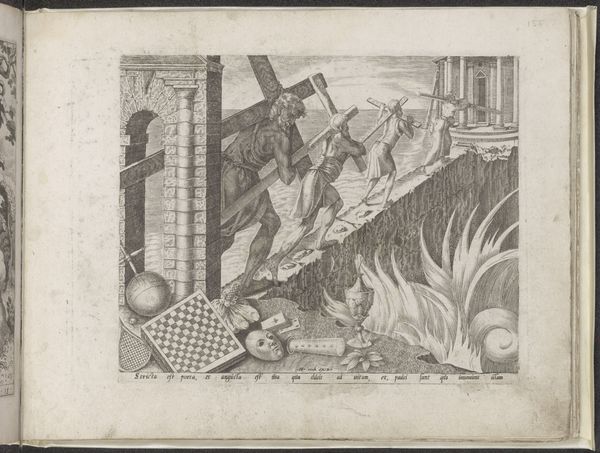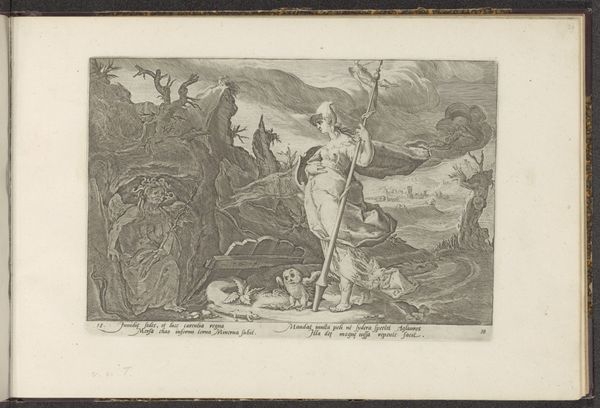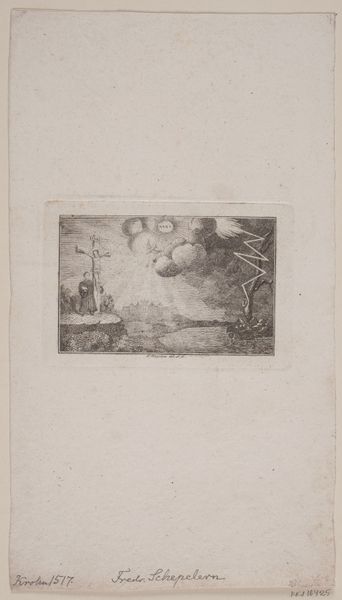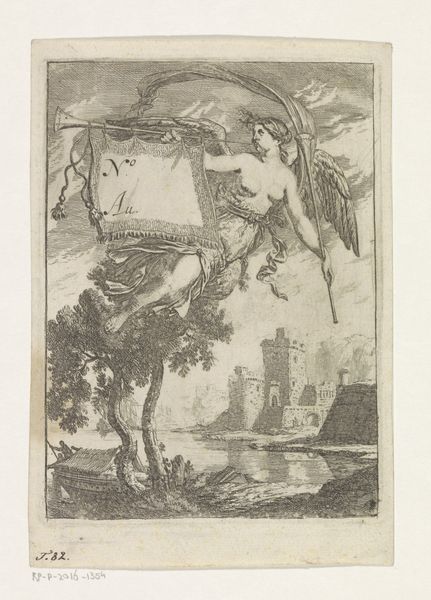
The Triumph of Death from The Triumphs of Petrarch 1543 - 1553
0:00
0:00
drawing, print, etching
#
drawing
#
ink drawing
#
allegory
# print
#
etching
#
landscape
#
form
#
history-painting
Dimensions: Plate: 9 x 6 15/16 in. (22.8 x 17.7 cm) Sheet: 13 7/16 x 10 3/8 in. (34.1 x 26.4 cm)
Copyright: Public Domain
Editor: So, this is "The Triumph of Death from The Triumphs of Petrarch," made sometime between 1543 and 1553 by Dirck Volckertsz Coornhert. It’s an etching, a print, and, well, quite grim! The skeletal figure looming over the landscape feels both terrifying and…resigned? What strikes you most about this work? Curator: That feeling of resignation you sensed is key, and, indeed, so is the historical context in which it was made. This wasn’t just a memento mori, a simple reminder of death, it emerged in the wake of plagues and constant warfare. It speaks to societal anxieties, but also the political structures that allowed such widespread suffering. Look at the figure of death – does that posture seem powerful, or simply… inevitable? Editor: I see what you mean. Inevitable is the right word. The landscape, normally a symbol of hope and renewal, is littered with bodies. There's nothing pastoral or comforting about it. It’s as if the very foundations of society have crumbled. Curator: Exactly. Now, consider Petrarch’s original poem. “The Triumph of Death” celebrates virtue and the overcoming of worldly desires. Do you see that message reinforced or undermined in Coornhert’s image? Where do we find the space for any type of individual action in times of widespread social strife? Editor: I guess undermined? It's not just about personal virtue anymore. There's a societal critique woven in; this work speaks to the failings of the community. Perhaps we need to focus on the structures in place if any virtue can ever be considered triumph. Curator: Precisely. This is more than just a depiction of death; it is a reflection on power, injustice, and collective responsibility, urging us to examine the forces that contribute to such widespread devastation. It resonates even today, doesn't it? Editor: Definitely. I hadn’t considered the social critique element so explicitly before, it makes the artwork so much more meaningful now. Curator: It is exactly this ability of historical works to remain poignant in contemporary dialogues that allows us to continue re-interpret, challenge, and grow.
Comments
No comments
Be the first to comment and join the conversation on the ultimate creative platform.
